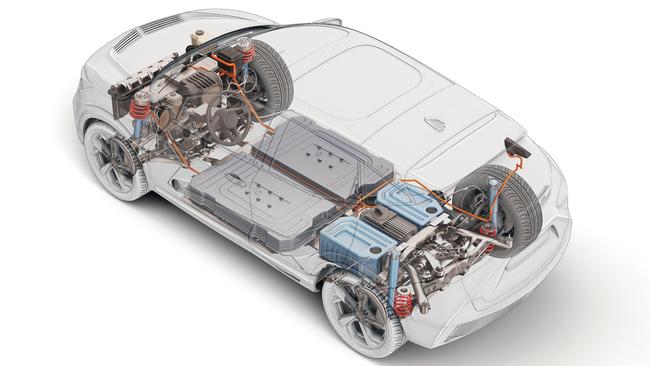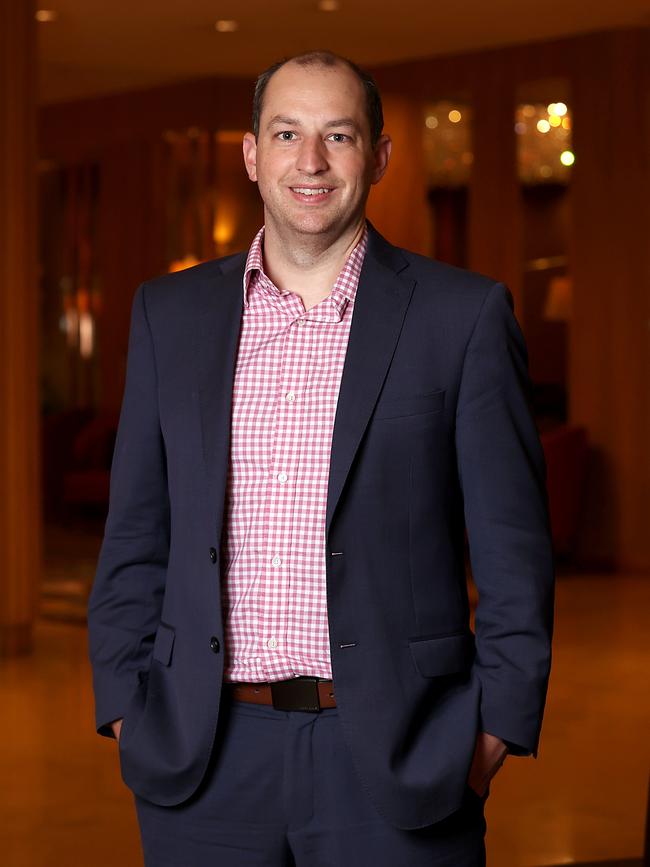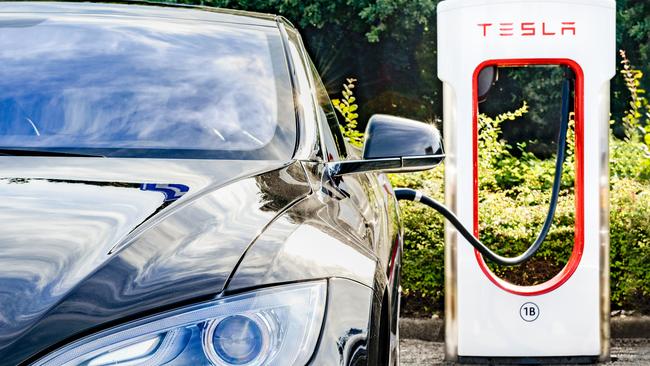Chris Burns, the chief executive and former top technical lead with EV carmaker Tesla says we need to stop thinking about the long-promised “million-mile” battery.
Car makers and battery makers have created a hype that newer EV batteries can last longer and longer without needing a costly replacement. Most manufacturers guarantee EV batteries for eight years.

Speaking to The Australian from Novonix’s operations near Halifax, Canada, Burns says while today’s battery chemistries are impressive – the underlying technology hasn’t changed.
He points out that many original Panasonic battery cells from a Tesla Model S built 10 years ago are still on the road today performing just fine with as much as 90 per cent of their capacity left.
“That’s pretty impressive for 10 year-old technology. But if you take that battery and put it on a tester, and you run it from 0 per cent to 100 per cent, back and forth, back and forth, it only lasts several hundred cycles – nobody drives their car to zero to 100, zero to 100.”
Burns says battery and EV producers need to get more out of their batteries for the right application.
“The more we can drive longevity in our batteries, the more we can diversify what they do.”
ASX-listed Novonix is working on that. Burns’ anode battery technology outlasts Tesla batteries on a charging cycle, which means less range loss over time for an electric vehicle. The batteries are rated for a higher stability.

Novonix is backed by Queensland energy rich-lister Trevor St Baker and counts former Dow Chemicals boss Andrew Liveris as a director and shareholder. US oil refining and energy major Phillips 66 is also on board as a major backer. Novonix specialises in the development of synthetic graphite. This is a key ingredient needed in building long life anodes, which sits at the heart of the battery. Currently China dominates the market for anode production.
Burns says EV batteries will increasingly be used as an energy source for households to manage renewables demand through peak periods. And this is the shift in the way EV makers are starting to think about their batteries.
“All of a sudden you have to decouple the idea of ‘I’m going to sit behind my steering wheel and drive a million miles’ to how many megawatt hours of energy can I run through this single battery?
“That becomes the question. And the more we can put through the batteries the way we’d like to think about it changes as you’re decreasing the total cost of ownership of that energy storage asset.
“We have to make the batteries affordable. And if they can last longer then that has incredible value.”
In the midst of the Covid share boom, Novonix surged in 2021, peaking at $10.68, giving the company a valuation of more than $5.2bn based purely around its intellectual property. But the shares quickly deflated as interest rates rose around the world. Since April shares have fallen below $1 each, giving Novonix a value of more than $460m.
Burns, who has a doctorate in physics, says Novonix was caught up in a “hype cycle” sweeping the entire EV sector, which at the time also looked like a land grab as big car makers were pivoting.
“Now unfortunately, we’ve been caught up in the bigger macro economic climate, we have high interest rates – that story is not just unique to Novonix.”
However, he says it is a matter of controlling what they can do. Burns says Novonix has a strong balance sheet and supportive investors and now it was a matter of delivering on production.

Novonix this month signed a major research and supply deal with Korean battery LG Energy Solution to develop artificial graphite anode material for lithium-ion batteries. It also has an option for LG to buy up to 50,000 tonnes of the anode material, underwriting production from Novonix’s US-based plant, which is in the process of scaling up output to 40,000 tonnes of synthetic graphite within the next two years.
The plan is to hit 150,000 tonnes by the end of the decade where Novonix’s technology could feed into as many as 2.7 million EV batteries annually. The newly commissioned gigafactory in Tennessee also has backing from a $US150m grant from the US Department of Energy.
Burns says Joe Biden’s $US500bn Inflation Reduction Act is already changing how US carmakers are rebuilding their local supply chains and sourcing their components for EV production. However, this is sucking huge amounts of investment away from minerals-rich places like Australia that would have normally had a headstart on production capacity.
He believes there will be a role for Australia in adding value to the critical minerals boom but this is still years away. Australian-sourced production can get credits under the scheme, but infrastructure here is still relatively undeveloped.
While there is intense activity underway in the US building out manufacturing capacity, Burns points out the major players are now making second-round investments in Canada. Volkswagen, BASF and LG have outlined plans in Canada for their North American strategy.
“I think they can only build so many gigafactories at the same time and so when we get through that wave, then they’re going to be looking at where they can continue growth.
“That’s when the idea of doing more downstream activity in Australia is going to really come to light.”
Productivity pinch
Newly-appointed Productivity Commission boss Chris Barrett will have his work cut out getting to the bottom of the nation’s productivity malaise on behalf of Treasurer Jim Chalmers.
Sagging productivity won’t be helped by the Albanese government’s fresh backing for cost-of-living linked wages growth, along with other measures to get wages moving such as multi-employer bargaining.
A push by industrial relations minister Tony Burke to give casual workers automatic full-time employment status will take further flex out of the workforce.
While there is no greater driver of broad living standards in an economy than productivity growth, Barrett should be familiar with the political landscape. He was a former chief of staff to the then treasurer Wayne Swan through the global financial crisis where as it happens Barrett worked alongside Chalmers, a staffer at the time. More recently Barrett was deputy treasury secretary to Victoria’s Andrews government. Barrett’s term as Productivity Commission chairman will be for five years.

Chalmers’ outgoing Reserve Bank boss Philip Lowe has attracted a political backlash for warning about the nation’s lagging productivity and more recently he has started to explicitly link this issue to interest rate rises.
Indeed, Lowe has noted that without gains in productivity, the current momentum in wages will increase unit labour costs, which he says is adding to pressure to keep the cash rate high.
Recent jumps in wages are seen to be adding to inflation given the current slow pace of productivity in the economy. An exceptionally tight labour market is only adding to pressures, which means that above target inflation could be stickier for longer.
Businesses too have some responsibility for Australia’s poor productivity record,
with non-mining investment also lagging for most of the past decade. This investment strike became even worse through the Covid pandemic as most companies went into survival mode.
A political battle remains in construction, which has led Australia’s sectoral decline in productivity since 2015. Other areas of low productivity are labour intensive industries from health, education and tourism.

Recent RBA research also points to a fall in economic “dynamism” in the economy. This is so-called entry rates for new businesses, which have been trending down. Business entry is an important barometer of “dynamism” because new firms, such as start-ups, are often regarded as innovators compared to established businesses. Former prime minister Malcolm Turnbull often spoke of an innovation agenda but was found to have lacked substance.
Chalmers at least has made the first step by acknowledging that Australia has a productivity problem, which is holding back living standards. Last year’s October budget trimmed Australia’s medium-term productivity assumptions from 1.5 per cent to 1.2 per cent. This move cascades through to future growth assumptions.
“The economy has not been productive enough for too long. The decade to 2020 was the worst for productivity growth in Australia in the last 60 years. And it will take time to turn that around,” the Treasurer says. “We see productivity as absolutely central to growing the economy the right way, getting decent wages growth and lifting living standards over time as well.”
Chalmers said Barrett’s experience in delivering reforms in both state and federal government will be “invaluable” as the productivity commission is refocused for the future. Barrett replaces outgoing chairman Michael Brennan.








Australian-Canadian battery play Novonix has a controversial view when it comes to developing electric vehicles that can seemingly drive forever.